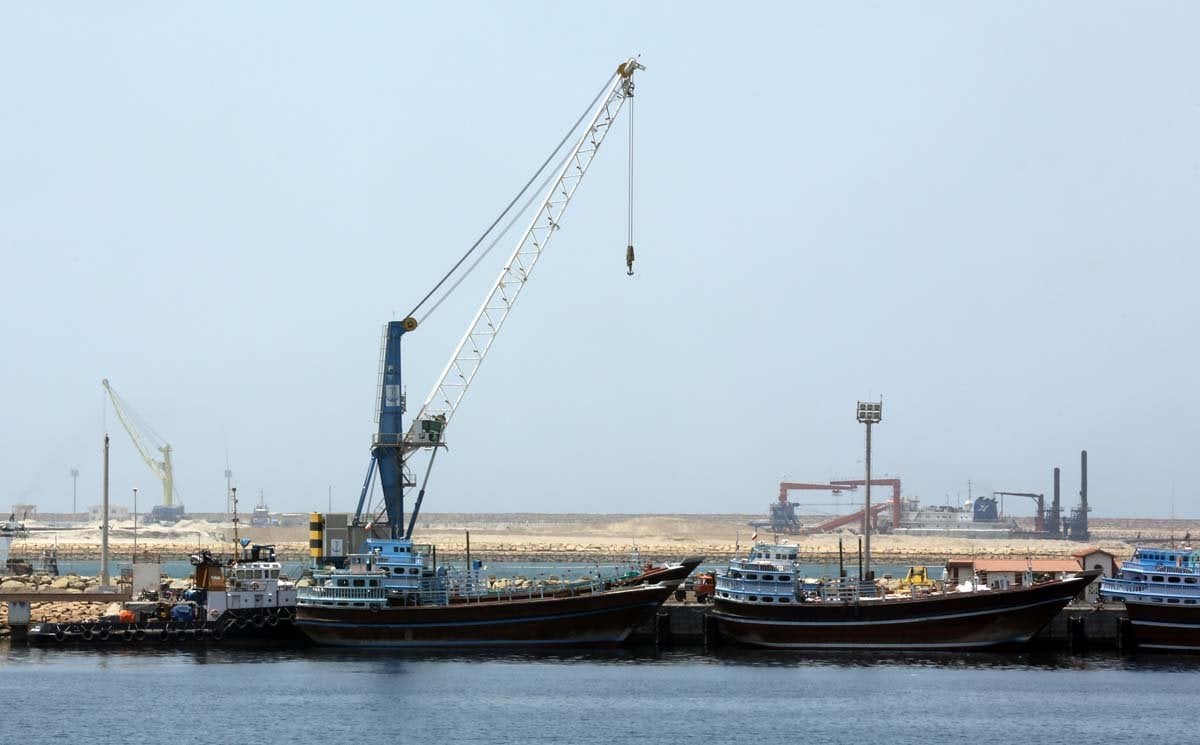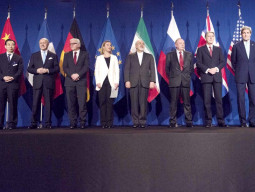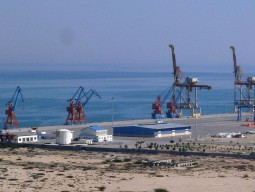
But against the backdrop of nuclear talks between Tehran and world powers, authorities hope foreign investors will finally wise up to the "golden opportunity" of doing business in Chabahar, Iran's only gateway to the Indian Ocean.
Between 2006 and 2010, the UN Security Council adopted six resolutions, four of which imposed sanctions, over Iran's nuclear and missile programmes.
Since 2012, the United States and the European Union have also applied a series of unilateral sanctions that specifically target the energy and banking sectors.
In early April, however, Tehran and six world powers reached a framework agreement aimed at paving the way for a final nuclear deal by the end of June.

Workers transfering goods from a cargo container to trucks at the Kalantari port in city of Chabahar on May 12, 2015. PHOTO: AFP
The deal is aimed at preventing Iran from developing nuclear weapons in exchange for an easing of the sanctions.
The United States, one of the six world powers negotiating with Iran along with Britain, China, France, Russia and Germany, has said sanctions would be lifted in stages as the deal is implemented.
For Chabahar Free Zone (CFZ), an accord cannot come soon enough.
The port is located in Sistan-Baluchistan province and provides countries in southeast and central Asia with a gateway to trade with Iran.
A brochure lists "the golden investment opportunities" of doing business here, such as 20 years of tax exemptions, reduced customs rights and a 100 per cent guarantee on invested capital and profits.
About 2,000 companies already have a presence in the free trade zone, which was first set up in 1994.

Workers walking near containers at the Kalantari port in city of Chabahar on May 12, 2015. PHOTO: AFP
Half of them are from Pakistan, Afghanistan and the Gulf, while 30 per cent are from China and other Asian countries. The remaining 20 per cent are from the West.
"Our policy is to have as many investors as possible," said Saeed Moghadam, the CFZ executive director for investments.
Fifteen years from now Chabahar "will function as a megaport with a traffic capacity of 80 million tonnes", said CFZ deputy chairman Ali Hamad Mobaraki.
There are plans to turn the zone into a hub for petrochemical activities as well as developing it into a tourist destination.
The CFZ already has a large commercial area where consumers can snap up goods that are 30 to 40 per cent cheaper than in the rest of Iran.
"People come from all over the country to buy," said Nematollah Rastegar, manager of an electrical appliances shop in the CFZ.
"Life is getting better here. There is progress. They are building houses".

Fishermen cleaning their catch in the southern port city of Chabahar. Chabahar, located on the coast of Sistan-Baluchistan (south-east), is open to the Oman Sea and the Indian Ocean. PHOTO: AFP
Yet activity in the port area has struggled to take off and there is still only one crane to unload containers.
"Many foreign companies left" after the West slapped international sanctions on Iran for relaunching its controversial nuclear programme in 2005, said Moghadam.
But the tide appears to have turned slightly since 2013, when Iran and world powers began talks aimed at a breakthrough on the nuclear issue.
According to Moghadam, 250 companies have made a "partial comeback" to Chabahar while "US, Canadian and French companies have shown great interest."
"We have already begun to negotiate contracts" with interested partners, he said, adding that he expected deals to be signed quickly if a nuclear deal is finalised by its end-of-June target date.
In early May, India signed a multi-million memorandum of understanding with Iran to develop Chabahar port.
The move aims to provide India with access to Afghanistan that bypasses Pakistan, and help it compete with China, which is investing heavily in the Pakistani port of Gwadar.
And in an effort to reach their goals, authorities are trying to improve infrastructure in and around Chabahar.
Projects include the construction of a railway to link the port to provincial capital Zahedan, building a highway and hotels, as well as revamping the local airport.












































COMMENTS (11)
Comments are moderated and generally will be posted if they are on-topic and not abusive.
For more information, please see our Comments FAQ